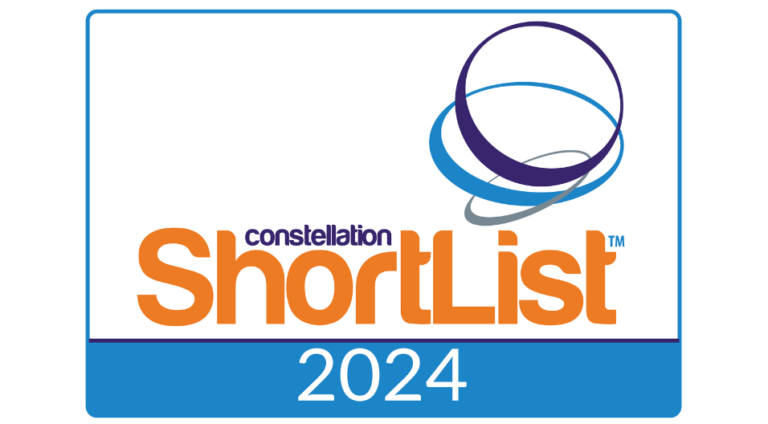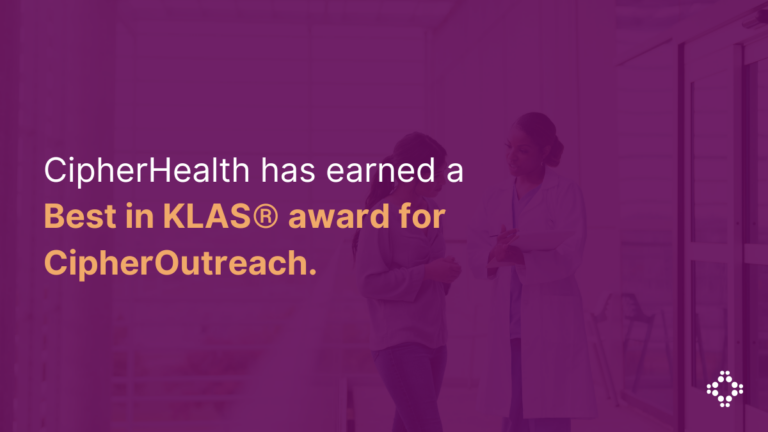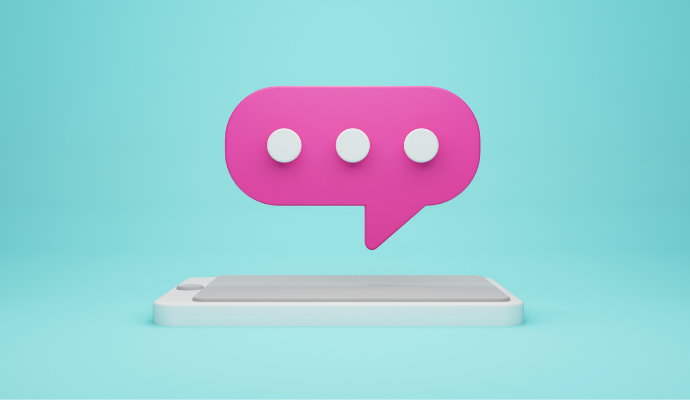After tech infrastructure fixes, Community Health Network’s patient outreach text message undeliverable rate went from 25,000 to two.
By Sara Heath
– It was a surprise during the winter of 2021 when Patrick McGill, MD, the chief analytics officer at Indiana’s Community Health Network, noticed some 25,000 of its patient outreach text messages were going undelivered.
These patient communications are important, McGill recalled, and it posed a risk to patient experience, engagement, and even no-show rates if they weren’t reaching patients’ cell phones.
“Through just delivery reports, we noticed this bump in this number of 25,000, something short of 25,000, as we were analyzing the data every month just looking to see what was going on,” McGill told PatientEngagementHIT in an interview. “And certainly, a number like that jumped out at us to say, ‘Okay, we’ve got to take a deeper dive into why these messages not getting delivered.’”
Like a lot of healthcare organizations, CHN uses text message patient outreach to drive patient engagement, guide patients through the healthcare journey, and keep in touch with them before and after appointments.
“We’ve really tried to automate and digitalize many aspects of our patient experience journey,” McGill explained.
Through appointment reminders and post-discharge follow-up, these messages help CHN providers engage patients in care and make sure patients are looped in on treatment.
“That’s a critical thing in that 48 hours after somebody leaves the hospital, making sure that they got all their needs addressed to prevent readmissions,” McGill added.
But in February of 2021, there was a glitch in the system that blocked those SMS messages from getting to around 25,000 patients. While that may seem like a drop in the bucket for some, McGill maintained it was 25,000 patients too many, especially while CHN joined the rest of the nation in battling a major COVID-19 surge that put a strain on patients and staff members.
“Getting people information, getting their appointments scheduled, getting them information about their appointments or other messages that they needed related to longitudinal monitoring with COVID, or other kinds of clinical aspects of care, was so important,” McGill said.
Notably, text message patient outreach was central to CHN’s strategy to mitigate provider burnout, which ran rampant during these acute COVID surges, McGill said. Research out of the Perelman School of Medicine at the University of Pennsylvania has found that text message outreach is just as effective as phone calls from nurses, meaning texts can take some of that workload off of clinicians.
“We were in the middle of COVID surge, so we were trying to take work off of everybody’s plate,” McGill noted. “That includes the staff, for example, and especially with appointment reminders and other things.”
McGill said CHN first had to identify the main issues with the SMS outreach software. By working with its vendor partner CipherHealth, the organization was able to determine that some cell phone carriers were blocking the automated text messages, something that is commonplace in both SMS and email outreach.
Next came the technology architecture changes, a task that rested with CHN’s IT team. Through those changes, the organization was able to ensure SMS patient outreach messages did not get blocked by cell phone carriers.
Soon thereafter, CHN said the number of undelivered patient outreach texts fell from 25,000 to two.
“We generally see better no-show rates,” McGill said of the SMS patient outreach strategy. “We’ve been able to also engage with sending additional reminders when people don’t respond, so they get an additional reminder. We’ve certainly seen a better clinical engagement, so we have very high satisfaction with this post-discharge program on that side.”
This all comes as CHN works to meet expectations for healthcare consumerism. In 2019, a survey of 1,000 healthcare leaders said healthcare consumerism is a top investment priority, largely because of the way patients have integrated expectations for other service sectors into the medical industry.
McGill said those expectations have led CHN to focus on automation, drawing on processes from industries like restaurants and online shopping to streamline a single patient experience of care.
“Ultimately, the big picture is that people want the experience in healthcare that they have in all the other aspects of their life with seamless, frictionless journeys as they experience the health system,” he explained.
“That’s really what we’re striving for. There are a lot of areas where people experience friction, whether it’s scheduling or referral management or just communication in general. That’s where we’ve tried to really start to focus and automate.”
Central to that goal is adding personalization to the patient experience, McGill added. For example, it might not be ideal to text a patient during the business day, but rather after 5 p.m.
“We always talk about personalized medicine, but it should be personalized engagement on some level, as well,” McGill said.
Tailoring patient outreach to those unique needs isn’t just a patient satisfier; it’s an opportunity to close care gaps. If CHN can reach patients when it’s most convenient on the consumer side, it’s more likely the organization can turn over a patient into a preventive screening appointment, closing care gaps and elevating clinical quality.
Healthcare organizations implementing patient outreach technologies need to think about their end goals, McGill advised. Getting patients in for care, closing care gaps, and furthering health equity are top-of-mind for CHN, he noted, but those priorities might change depending on the organization’s needs and populations served.
Organization leaders might ask themselves what they hope to get out of patient outreach messages, or the targeted outcome. In doing so, they should consider the view from the patient’s perspective.
“Sometimes we lose sight of that,” McGill pointed out. “We only look at it from the health system perspective.”
“We always talk about the patient journey as it’s a series of transactions,” he concluded. “But if you think about it, in healthcare, it’s really an emotional journey that involves a series of transactions versus a series of transactions with an emotional aspect tied to it. If we flip that conversation, it really can help drive where we want to get.”
This article was originally published in PatientEngagementHIT on September 15, 2022.





